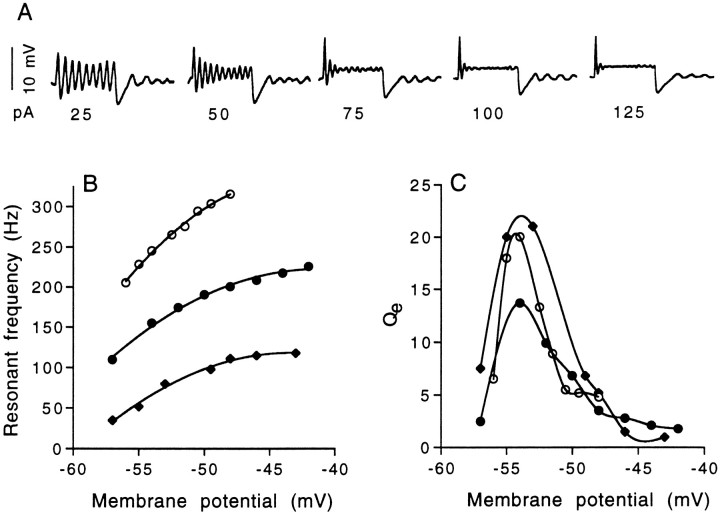Fig. 3.
Voltage-dependent properties of electrical resonance. A, An example of electrical resonances recorded in a rostral hair cell. Depolarizing current pulses of increasing amplitude will increase the onset resonant frequency but diminish the quality factor (Qe) of the onset oscillations. Offset oscillation frequency remains unchanged. This cell is not included in B and C.B, As input current is increased, the steady-state membrane potential around which the onset oscillations occur is increasingly depolarized, resulting in higher frequency electrical resonance. C, The quality of electrical resonances (Qe) is found to be maximal within 2 or 3 mV of the threshold for the voltage-dependent calcium current. The hair cells represented here (same cells as in B) had maximal onset Qe values of ∼20; however, a small standing current could be used in each of the cells shown to generate continuous oscillations near the resting potential, which corresponds to an infinite Qe. Open circles, Medial hair cell, 8 pF, 245 Hz at peakQe of 20; Vh of −54 mV; filled circles, medial hair cell, 10 pF, 155 Hz at peak Qe of 13.7;Vh of −54 mV; filled diamonds, rostral hair cell, 16 pF; 80 Hz at peakQe of 21; Vh of −53 mV. Curves in B were drawn by eye, and curves in C are interpolated.

